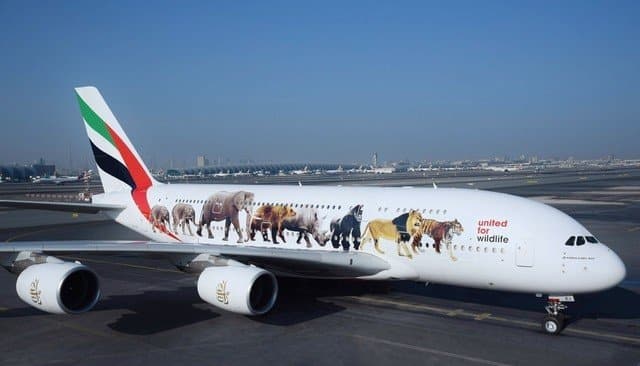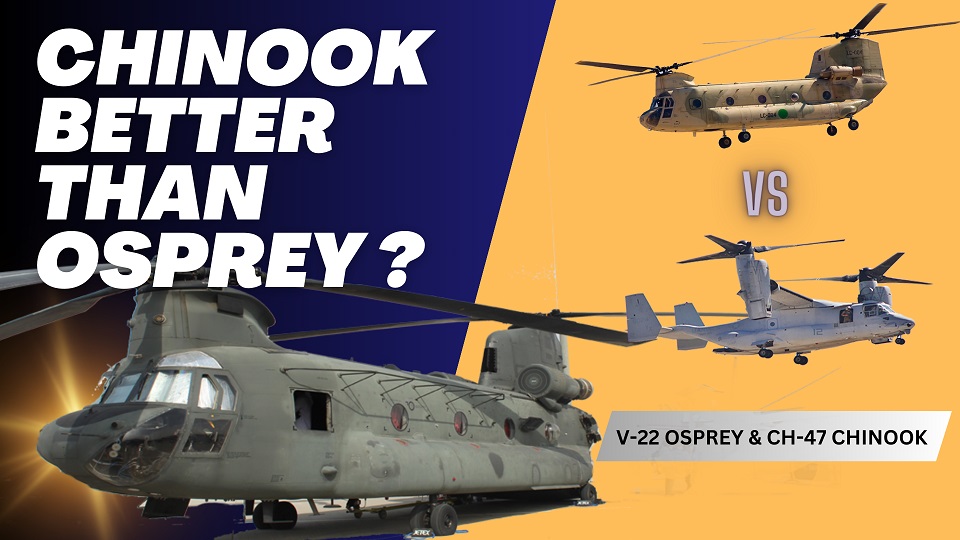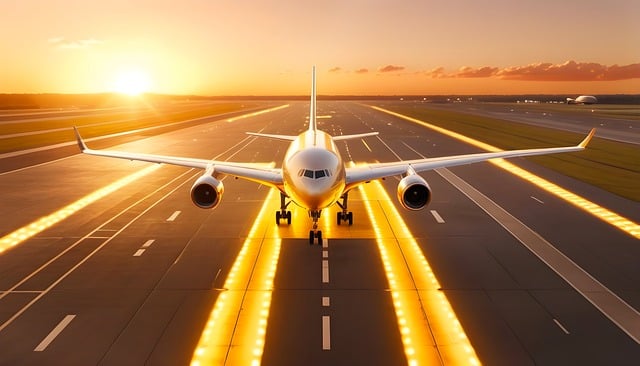Aviation
Emirates’ super jumbo message against the illegal wildlife trade

3 November 2015, Dubai, UAE: Two massive Emirates A380 jets take to the skies this week, wearing special livery in support of United for Wildlife, a global collaboration that unites the efforts of the world’s leading wildlife charities in the fight against the illegal wildlife trade.
The beautiful livery, featuring some of the planet’s wildlife threatened by poaching and the illegal wildlife trade, aims to raise awareness of the illegal wildlife trade and communicate the need for urgent action.
The Rt Hon The Lord Hague of Richmond, Chair of the United for Wildlife Transport Taskforce said: “We welcome the efforts and commitment made by Emirates airline to combat the illegal wildlife trade. This is more than just an environmental issue. The illegal wildlife trade is now recognized as a serious and organised transnational crime. It drives corruption, is linked to money laundering and can damage economic development in many of the world’s poorest countries and communities. It will take a concerted effort, involving not only effective deterrents against poaching and smuggling, and vigilance in policing and punishing these crimes, but also efforts to increase consumer education to cut demand to protect these animals for the future. ”
Sir Tim Clark, President Emirates Airline said: “Many animals, in particular African elephants, rhinos, tigers, and pangolins, are under extreme pressure because of an unprecedented spike in the illegal wildlife trade. The world is in a global poaching crisis, and everyone has to do their part to stop this, before it is too late. Emirates believes that the global transport industry, including airlines, can play a significant role to break the supply chain of illegal wildlife trade. And at Emirates, we are committing the resources to do our part.”
Consumers too, can contribute in a big way, by boycotting products made from the parts of these endangered animals and discouraging others from doing so.

Emirates’ two A380s will be operating flights this week. The first one departed for London (LHR) on 2nd November and a second will operate to Mauritius (MRU) on5th November, each wearing a different design featuring endangered wildlife. The decal on the first flight featured six endangered species, while the second flight will feature a decal with rhinos and elephants. Both designs cover the world’s largest passenger aircraft almost from nose to tail, spreading over the wings and under-belly of the plane. Approximately 40% of the surface area of the A380 will be covered by the decal. The larger of the two designs span over 42.5 metres in length and 6.2 metres in width, and weighs 70kg. Entirely designed, produced, and applied by Emirates’ in-house staff, both of these are the largest decals the airline has put on any aircraft, to date and took a team of 28 people 2.5 days to apply the decals on one A380, or approximately 900 man hours per aircraft.
View the timelapse video of the aircraft putting on its new livery here:
In addition to its two A380s literally “flying” the flag for the cause, Emirates will run regular feature stories about wildlife protection in its inflight magazines, and showcase podcast interviews, wildlife programming and feature films on its award-winning ice inflight entertainment system. This subject was the cover story in the October edition of Emirates’ Open Skies magazine, which can be read here.
The airline is also collaborating with international organisations to train and better equip its ground and cargo staff to detect and deal with illegal wildlife products in transit. As the required paperwork for movement of some wildlife products is often forged, Emirates also made the decision to ban trophy shipments.
dnata, one of the world’s largest air services provider and a member of the Emirates Group, is also raising awareness through its dnata4good initiative. dnata4good has already been working with local charity organisations and authorities to save the Rhinos in South Africa. dnata4good has already funded an emergency response vehicle which treats poached rhinos in the field and have played a major part in educating local children on the dangers of poaching. In addition to this, they have also supported the first rhino orphanage and rehabilitation facility which is now fully operational in Hoedspruit.
Quick facts about the threat to wildlife from poaching and illegal trade
- There are as few as 3,200 tigers left in the wild. Illegal trade in their parts and products is one of the biggest threats to wild tigers. Between 2000 and 2014, the parts of at least 1,590 tigers were seized in Asia.
- Rhino poaching in South Africa increased from 13 rhinos in 2007 to 1215 rhinos in 2014. That now equates to more than three rhinos a day. Africa-wide, 1,293 rhinos are reported to have been poached in 2014.
- Around 30,000 African elephants are killed by poachers each year. Central Africa is worst hit with a poaching rate twice the continental average. Left unaddressed, poaching could cause the extinction of elephants in Central Africa.
- The pangolin is the world’s most-trafficked mammal. Over a million pangolins are estimated to have been poached in the last ten years.
- Park rangers are often ill equipped and inexperienced to tackle armed and ruthless poachers. Poaching syndicates have changed the way they operate and are now using sophisticated weaponry and equipment to increase their activities and avoid detection (helicopters, veterinary drugs, night vision equipment). 1,000 rangers are estimated to have been killed in ten years while protecting wildlife.
About Emirates
Founded in 1985, Emirates is a global connector of people and places. Based in Dubai, the airline’s global network serves 147 destinations in 79 countries across six continents. Its luxurious amenities, regionally inspired gourmet cuisine, award-winning in-flight entertainment system – ice – and unmatched hospitality provided by its iconic multilingual Cabin Crew have made Emirates one of the world’s most recognized airline brands.
For more information, please visit http://www.emirates.com
About United for Wildlife
United for Wildlife is an unprecedented alliance between seven of the world’s most influential conservation organisations and The Royal Foundation of the Duke and Duchess of Cambridge and Prince Harry. The collaboration between Conservation International (CI), Fauna & Flora International (FFI), International Union for Conservation of Nature (IUCN), The Nature Conservancy (TNC), Wildlife Conservation Society (WCS), WWF-UK, the Zoological Society of London (ZSL) and The Royal Foundation hopes to lead the way to substantially increase the global response to major conservation crisis.
With the support of The Royal Foundation, United for Wildlife hopes to bring attention to acute conservation problems, the most pressing of which, as agreed amongst the collaboration, is the rapid escalation of the illegal wildlife trade. This trade is having a devastating effect on wild populations of some of the largest and most iconic species: elephants, rhinos and tigers, plus lesser known animals such as the pangolin.
The President of Emirates Airline, Sir Tim Clark, has joined the United for Wildlife International Taskforce on the Transport of Illegal Wildlife Products which is focused on stopping the shipment of illegal wildlife products. The Taskforce is chaired by The Rt Hon The Lord Hague of Richmond, former Secretary of State for Foreign and Commonwealth Affairs. The Taskforce has brought together senior representatives of the transport industry to make practical recommendations for the reduction of trafficking of illegal wildlife products.
To learn more, visit www.unitedforwildlife.org
Liked it ..?
Share with your friends and family

Aircraft comparison
Osprey is faster than Chinook helicopter ?

In this article, we’ll delve into two distinct military aircraft that have played essential roles in United Air Force defense. Both aircraft have unique characteristics in terms of usage and flying capabilities. One is capable of vertical takeoff and flies like an aircraft, while the other is a helicopter with two tandem rotors. Let’s explore each of these aircraft in detail.
The speed of helicopters can vary depending on several factors such as their design, engine power, payload, and mission requirements. Generally speaking, the Osprey (specifically referring to the V-22 Osprey) is faster than the Chinook helicopter.
The V-22 Osprey is a tiltrotor aircraft, meaning it can take off and land vertically like a helicopter but also tilt its rotors forward to fly like an airplane. This design allows the Osprey to achieve higher speeds compared to conventional helicopters. The cruising speed of the V-22 Osprey is around 241 knots (277 mph or 446 km/h).
On the other hand, the Chinook helicopter, such as the Boeing CH-47 Chinook, has a cruising speed typically around 170 knots (196 mph or 315 km/h). While the Chinook is a highly capable and versatile helicopter known for its heavy-lift capabilities and reliability, it generally operates at lower speeds compared to the Osprey.
The comparison between an Osprey and a Chinook helicopter involves contrasting two distinct aircraft with different designs, capabilities, and purposes:
MV-22 Osprey details:
The Osprey has garnered significant controversy since its inaugural flight, primarily stemming from issues associated with its tiltrotor design. These challenges have led to several incidents and crashes, resulting in the tragic loss of pilots and crew members and prompting multiple groundings of the aircraft.
However, efforts are underway to address these technical issues swiftly, with plans to rectify the problems and resume flights promptly. Despite these setbacks, the Osprey remains crucial in operational contexts, offering enhanced capabilities for transporting both cargo and crew members, underscoring its pivotal role in various missions.
Except for the United States and Japan, no other country has been granted authorization to utilize the Osprey aircraft. Its unique design and specialized nature, being built in the United States, likely necessitate governmental permission for export to other nations.
The Osprey stands out for its groundbreaking design and innovation, featuring the ability to transition from vertical to horizontal rotor positions while also generating thrust like a conventional aircraft.
- MV-22 Osprey:
- The MV-22 Osprey is a tiltrotor aircraft, meaning it can take off and land like a helicopter but fly like a fixed-wing aircraft once airborne.
- It’s primarily used for vertical takeoff and landing (VTOL), troop transport, cargo transport, and aerial refueling.
- The Osprey has a unique ability to combine the vertical lift capability of a helicopter with the speed and range of a turboprop aircraft.
- It can carry up to 24 troops or 20,000 pounds of internal cargo and has a top speed of around 315 miles per hour (507 km/h).
- The Osprey is utilized by the U.S. Marine Corps, U.S. Air Force Special Operations Command, and other military forces around the world.
Boeing CH-47 Chinook:
The Chinook helicopter stands as a testament to unparalleled engineering and innovation, making it one of the most distinctive aircraft ever constructed. Since its inception, no other nation has attempted to replicate its singular design, owing to the extraordinary precision and aerospace technology required for its construction. This helicopter, revered as an engineering marvel, has become a staple in major battlegrounds, renowned for its exceptional capacity to transport troops and cargo to any destination. Remarkably versatile, it operates seamlessly on both land and water surfaces, boasting an integrated floating system that enhances its capabilities even further.
Selected countries have been granted permission to utilize the Chinook helicopter, showcasing its global appeal and strategic importance. Furthermore, ongoing development efforts are underway to enhance the speed and carrying capacity of the next version of this iconic aircraft. Renowned for its exceptional safety record, the Chinook stands as one of the safest helicopters in operation today, with a remarkably low incidence of crashes. Its versatility is unmatched, making it an invaluable asset for operations in diverse terrains and environments.
- Boeing CH-47 Chinook:
- The Chinook is a tandem rotor helicopter, known for its distinctive twin-rotor design.
- It’s a heavy-lift helicopter primarily used for troop transportation, artillery emplacement, battlefield resupply, and various other missions.
- The Chinook has a rear loading ramp for cargo and troops, making it well-suited for quick loading and unloading.
- It can carry up to 55 troops or 24,000 pounds of cargo internally and has a top speed of around 170 miles per hour (274 km/h).
- The Chinook is widely used by the U.S. Army and various other military forces worldwide, including the UK, Canada, and others.
Comparison:
- Design: The Osprey is a tiltrotor aircraft, while the Chinook is a tandem-rotor helicopter.
- Speed and Range: The Osprey has a higher top speed and longer range compared to the Chinook due to its fixed-wing aircraft capabilities.
- Payload Capacity: The Chinook generally has a higher payload capacity for both troops and cargo compared to the Osprey.
- Versatility: While both aircraft are versatile in their own right, Osprey’s ability to take off and land vertically as well as fly at high speeds over long distances gives it a unique advantage in certain scenarios. However, the Chinook’s ability to carry larger payloads makes it better suited for heavy lift operations.
- Cost and Maintenance: Maintenance and operating costs may vary between the two aircraft, with tiltrotor technology typically being more complex than traditional helicopter designs.
Most Popular .
These are the Top 10 best US airlines of 2024

In an era where air travel plays an integral role in connecting people and places, the quality of airline service can significantly impact travelers’ experiences.
As we navigate the ever-changing landscape of aviation, insights into the performance and reliability of different carriers become invaluable. Enter WalletHub’s comprehensive analysis, offering a glimpse into the 10 best US airlines of 2024. Join us as we embark on a journey through the clouds, exploring the top performers.
Best airlines of 2024
- Alaska Airlines (68.07 out of 100): Anchoring the list is Alaska Airlines, celebrated for its consistency and customer satisfaction. With a score of 68.07, Alaska Airlines sets the standard for excellence in the skies.
- SkyWest Airlines (65.96): Following closely behind is SkyWest Airlines, recognized for its operational prowess and reliability. With a score of 65.96, SkyWest secures its position among the elite.
- Spirit Airlines (65.69): Surging into third place is Spirit Airlines, renowned for its affordability and expansive route network. Despite its low-cost model, Spirit Airlines earns acclaim with a score of 65.69.
- Delta Air Lines (61.56): A stalwart of the industry, Delta Air Lines maintains its reputation for superior service and efficiency. With a score of 61.56, Delta continues to soar above the competition.
- United Airlines (51.96): United Airlines occupies the middle ground, offering a balance of convenience and comfort to travelers. With a score of 51.96, United remains a dependable choice for domestic and international flights.
- JetBlue Airways (51.6): JetBlue Airways, known for its focus on customer experience and amenities, secures its place in the top 10 with a score of 51.6.
- Hawaiian Airlines (48.3): Transporting passengers, Hawaiian Airlines earns accolades for its hospitality and island-inspired service. With a score of 48.3, Hawaiian Airlines embodies the spirit of aloha.
- American Airlines (46.52): Despite facing challenges, American Airlines maintains its presence among the top performers with a score of 46.52, showcasing resilience in the competitive aviation landscape.
- Frontier Airlines (43.57): Frontier Airlines offers budget-conscious travelers a gateway to the skies with its affordable fares and diverse destinations. With a score of 43.57, Frontier Airlines secures its place in the top 10.
- Southwest Airlines (36.03): Rounding out the list is Southwest Airlines, renowned for its no-frills approach and extensive route network. With a score of 36.03, Southwest Airlines remains a popular choice for travelers seeking simplicity and value.
Aviation
South Korea Introduces Cutting-Edge MRO Center for F-35 and IAI

South Korea is set to make waves in the aerospace industry with the establishment of a cutting-edge Maintenance, Repair, and Overhaul (MRO) hub for F-35 fighter jets and IAI (Israel Aerospace Industries) aircraft.
Central to this initiative is the specialization in converting Boeing 777-ERSF, colloquially known as the “Big Twin,” from passenger to freighter configurations. Under the terms of the agreement, IAI will spearhead the conversion of six B777-300ER and B777-200LR aircraft annually, commencing in 2024. This strategic move is in response to the anticipated surge in demand for wide-body freighter aircraft capable of long-haul flights.
Furthermore, South Korea’s forward-looking vision extends beyond aircraft conversion, with plans to establish a Lockheed Martin F-35 maintenance, repair, and overhaul depot at Cheongju Air Base by 2027. This strategic move not only enhances the operational readiness of South Korea’s air force but also positions the nation as a regional hub for F-35 maintenance expertise.
In preparation for this expansion, thirty Republic of Korea Air Force (ROKAF) engineers and technicians are slated to undergo intensive maintenance training in the United States in 2025, a testament to South Korea’s commitment to fostering local expertise and talent.
IAI’s visionary approach to certification and collaboration underscores the potential for transformative change. With plans for the 777-300ERSF certification process set to unfold in Israel, followed by the rigorous scrutiny of regulatory agencies such as the US Federal Aviation Administration (FAA), the stage is set for the ‘Big Twin’ to soar to new heights of success.
In partnership with esteemed entities like STK and Incheon International Airport Corporation, this collaboration promises to unleash a wave of benefits, amplifying the resilience and competitiveness of the Korean aviation sector while catalyzing job creation and economic prosperity.

























